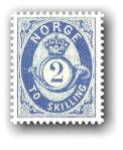
Until the second half of the mid-19th century, the Asante and related peoples of Ghana and the Ivory Coast used small brass castings made by the lost-wax process as weights for measuring their gold-dust currency.
These weights, made in large numbers by professional metal workers, came in all shapes and sizes. There were two sorts of weights: those which represent miniature objects, creatures, and activities from local life, and those in non-representational, geometrical forms.
Many of the representational weights depicted musical instruments, either on their own or being played, and activities which traditionally took place to the accompaniment of music. The great majority of these weights show only two types of instruments: ivory trumpets, and various types of drums.
This according to “Music and gold-weights in Asante” by Malcolm Donald McLeod (British museum yearbook 1980, pp. 225–42).
Above, a weight depicting a pair of atumpan drums of the Akan people; below, the atumpan in action.













